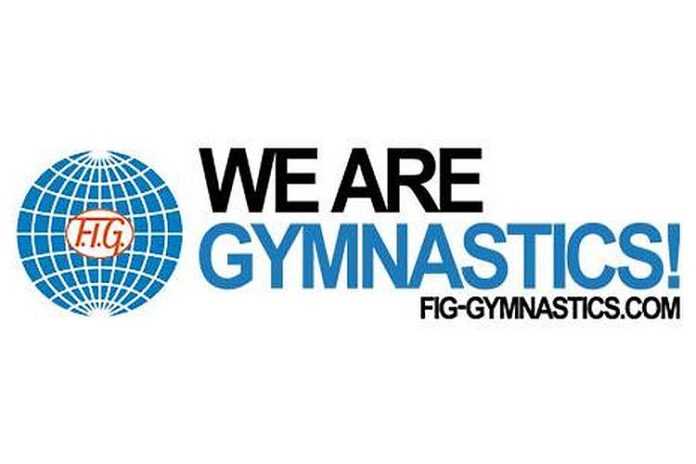Larry Nassar has been convicted of crimes that will keep him in jail for the rest of his life. He sexually abused hundreds of young, female gymnasts who trusted him to provide medical care.
As horrible as his actions were, they are hardly the end of the tragedy. In fact, it’s still going on.
The highly-detailed, thoroughly-researched report on the scandal in gymnastics from the Boston-based Ropes & Gray law firm went far beyond Nassar’s personal actions and deeply into the structure of gymnastics and the brutal nature of the sport at the world-class level.
This horror is still with us, and the question has to be asked as to who is responsible for this? Excerpts from the Report:
∙ Perhaps more than any other sport, gymnastics is a sport of youth. In 1976, 14-year-old Nadia Comaneci astounded the world with routines that earned the sport’s first perfect 10s at the Olympic Games, heralding a new degree of difficulty in the sport. Winning three gold medals in the process, she served as “the most prominent ‘advertisement’ for a nascent trend towards younger, pre-pubescent gymnasts which had begun in the late 1960s.” The previous era of gymnastics had focused more on artistry and emotional expression than acrobatic feats, enabling athletes in their 20s and 30s to dominate the sport. (p. 111)
∙ In the words of one gymnast, “I think we have to remember, yes, these are world-class athletes, but they’re also little girls.”And little girls have particular vulnerabilities, including a limited capacity to recognize and protect themselves against inappropriate behavior by trusted authority figures. (p. 112)
∙ Given the emphasis that coaches often placed on maintaining a slim physique, many athletes recalled that these efforts often took the form of extreme measures to keep their weight artificially low. One gymnast explained, “I took anywhere from five to 15 laxatives without missing a single day for those six years thinking that was the only way to stay skinny enough and, therefore, be liked by my coaches and the national team staff.” Another gymnast explained that she was often weighed twice a day and would thus forgo water and food over the course of the training day so as not to risk the ire of her coaches. In the words of one gymnast, even “[o]ur bodies did not belong to us.” (p. 114)
∙ The young age of many gymnasts exacerbates this dynamic: as one witness observed, “These girls are going to do whatever they are told. They are not going to challenge it or talk about it. One can talk about giving athletes a voice, but it is difficult to give an 8-year-old or a 10-year-old a voice.” (p. 115)
∙ Another former gymnast recalled that, as a 13-old, she “pushed through the excruciating pain” of a severely pulled hamstring to complete a vault to impress a top USAG coach, who “proceeded to yell at [her] and shamed [her] for not being tough enough to fight through the pain” more effectively. The coach then told her that she “would never make the national team if [she] didn’t toughen up.” (p. 117)
∙ I had to accept that my coaches would yell and belittle me on a daily basis. I wouldn’t be allowed to have friends at school or go to school dances because they were “distractions.” I would never go on family vacations and rarely see my siblings perform in their sports. I wouldn’t be allowed to talk to my teammates at the gym because that meant I wasn’t focused. I couldn’t feel like a person anymore if I wanted to reach my dream. I felt like a robot. This became my “normal.” (p. 119)
The Report also goes into considerable detail about the changes brought to the U.S. National Team – and into gymnastics in the U.S. in general – by coaches Bela and Martha Karolyi. They were the coaches of Comaneci in 1976 and then of Olympic All-Around gold medalist Mary Lou Retton of the U.S. in 1984. The Report states:
∙ “The Karolyis’ training methodology has been described in different ways by different people, with some extolling its virtues and others condemning it as unduly harsh or even abusive.” (p. 128)
∙ Although there were many hallmarks of intensity, or even harshness, in American women’s artistic gymnastics before the Karolyis entered the scene, the Karolyis’ success arguably normalized and even exalted certain of these elements. As one gymnast recalled, “other coaches saw that [the Karolyis] were winning and thought, ‘This is the way you have to coach.’” (p. 131).
This was underscored by the designation by USA Gymnastics of the Karolyi Ranch outside Houston, Texas as a “National Training Center.” USA Gymnastics only abandoned this facility after the Nassar scandal broke open in 2016.
Moreover, there is the issue of control by coaches and others on the scoring of gymnastics competitions and selection of teams. One gymnast noted, “This is a sport based solely on judgments, there are no objective criteria. Your life, future depends on the selection process. If you rock the boat, you are kicked off.” (p. 126)
And the subjective nature of scoring is another part of the issue. Among the three top-tier sports in the Olympic Games, only gymnastics is based on judging. Track & field and swimming are all about getting to the line (or touch pad) first, or jumping higher or throwing further. (True, diving and artistic swimming are judged; but the popularity of Aquatics is based on swimming.)
And who sets the standards of judging? That’s the Federation Internationale de Gymnastique (FIG). The Ropes & Gray Report doesn’t talk about the FIG, but they’re a big part of the problem.
The scoring system that gave us the “perfect 10.00” score first achieved in the Olympic Games by Comeneci in 1976 was abandoned after significant scoring controversies at the 2004 Games in Athens. A new “Code of Points” was adopted in 2006 and has been updated regularly.
Rather than a single score, the current Code of Points combines two parts: a score based on the difficulty of the planned routine (“D” score) and a second score based on the quality of execution of that routine (“E” score). There is no ceiling on what the total score can be, although the “E” score starts with a maximum of 10.0, from which deductions are taken for errors.
This scoring system is the crux of the issue and one where if the FIG were serious about changing the way gymnastics is practiced, it could make the difference:
∙ Change the Code of Points to re-emphasize dance, grace and elegance instead of how many somersaults and twists can be incorporated in a single vault.
To those who think this will hurt the sport, consider the rather stunning popularity – especially in comparison with gymnastics competitions outside of the Olympic Games – of shows like “Dancing With The Stars.” There is no doubt about the athleticism of the top dancers, and if properly combined with the jumping and tumbling elements, might even be more popular than the way gymnastics is now.
∙ Impose a higher age limit for elite-level women’s gymnastics and get the under-18 children out of the major international competitions. The lower limit was 14 through 1981, then 15 through 1996 and now 16 from 1997 forward. Let’s go to 18, or whatever age is right for young girls to have formed their adult bone structure.
∙ With older athletes and less emphasis on difficult (and dangerous) movements, the number of injuries in the sport will be reduced. Maybe then we could have an actual gymnastics “season,” culminating in a World Championships. As it is now –in the U.S. – there are 1-2 American meets and then the World Championships … and that’s the “season.”
In contrast, “Dancing With The Stars” has generally run for 10-11 weeks in a row, with 12-13 entries in most of its “seasons.” And the audiences have been vast, far more so than any gymnastics event except the Olympic Games.
The FIG bears significant responsibility for women’s gymnastics becoming a showcase for children. If it wants to help end this crisis, it has the ability to do so now. Will it?
Rich Perelman
Editor

























